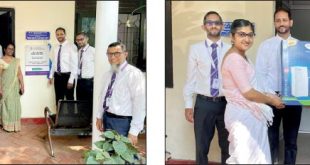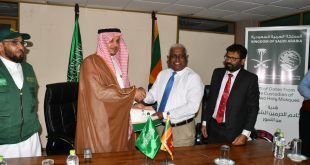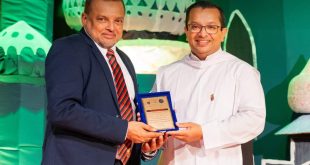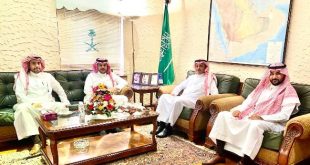There was no actual conflict between ethnicities in Sri Lanka. The truth is that ethnicity, language, religion, caste and gender have no bearing on peoples’ opportunities in this country. This is amply borne out by the statistics, pointed out Mr. Gotabaya Rajapaksa.
Secretary Defence and Urban Development Mr. Gotabaya Rajapaksa addressed the members of the Young Presidents' Organization on Saturday (27th October). The meeting was held at the Lakshman Kadirgamar Institute of International Relations and Strategic Studies in Colombo.
The Young Presidents' Organization (YPO) is an international network of young chief executive officers founded in 1950 in New York. The organization unites approximately 20,000 business leaders in more than 120 countries around a shared mission: Better Leaders Through Education and Idea Exchange.
Speaking at The Young Presidents' Organization, Secretary Defence and Urban Development Mr. Gotabaya Rajapaksa said, “If we look at the Universities, it is evident that students from all communities pursue studies in a variety of fields. In all professions, whether it is medicine, engineering, law, academia or in the corporate sector, all the minority communities are very well represented. There is no discrimination with regard to the services provided by the state, nor are there any serious tensions amongst the communities living in the country. The majority of the Tamil population lives outside the North and East, and have done so for many years.”
Given below the full text of the speech delivered by Secretary Defence and Urban Development Mr. Gotabaya Rajapaksa Speech to the Young Presidents’ Organisation at the Lakshman Kadirgamar Institute of International Relations and Strategic Studies in Colombo on Saturday morning:
"Good morning.
It is a great pleasure for me to speak to you this morning. I trust that the discussions scheduled for you in Colombo today will set the stage for an informative and enjoyable stay in Sri Lanka. I understand that many of you are visiting this country for the first time. I hope that you will make full use of this opportunity to see for yourselves the many things Sri Lanka has to offer, from its numerous scenic attractions and world-class historical sites, to its great prospects for lucrative and varied investments. I have every confidence that the next three days will give you many happy memories to take back when this leg of your journey is completed.
Your visit to Sri Lanka takes place at an opportune moment, when the country is making full use of its newfound peace and stability to achieve a national transformation. This is a prospect that seemed impossible just a few years ago. Until May 2009, Sri Lanka was embroiled in a three decades long terrorist conflict against the Liberation Tigers of Tamil Eelam, better known as the LTTE. Banned in several countries including the United States of America, the LTTE was one of the most ruthless and most sophisticated terrorist organisations in the world. At the height of its power, it had more than 20,000 battle hardened cadres in its ranks, including child soldiers and suicide cadres, a vast armoury of advanced weaponry, and a sophisticated naval wing and a fledgling air wing. It dominated large areas of land in the North and East as well as a considerable part of the country’s coastline. Its ruthless terrorist attacks throughout Sri Lanka caused immense suffering to our entire population.
When His Excellency Mahinda Rajapaksa was elected to the Presidency in 2005, he had a mandate from the people to end the terrorist conflict once and for all. This was a daunting task. Four previous Presidents as well as several successive Governments comprising various political parties had tried to solve the issue of LTTE terrorism without success. Over the years, a range of different approaches including military campaigns, peace talks, and even international mediation had been tried. None had succeeded. The LTTE had no interest in peace. Instead, it exploited the respite given through peace talks and ceasefires to kill its opponents and strengthen its offensive capabilities. Although it claimed to be fighting for the rights of the Tamil community by trying to establish a separate state, its sole interest was in increasing its stronghold over the territories it dominated in order to establish its own freedom.
While it is true that there were certain historic issues and problems around which sections of the Tamil community had mobilised, there was no actual conflict between ethnicities in Sri Lanka. The truth is that ethnicity, language, religion, caste and gender have no bearing on peoples’ opportunities in this country. This is amply borne out by the statistics. If we look at the Universities, it is evident that students from all communities pursue studies in a variety of fields. In all professions, whether it is medicine, engineering, law, academia or in the corporate sector, all the minority communities are very well represented. There is no discrimination with regard to the services provided by the state, nor are there any serious tensions amongst the communities living in the country. The majority of the Tamil population lives outside the North and East, and have done so for many years.
The fact Sri Lanka’s many communities can and do live side-by-side in perfect amity is easily demonstrable through the example of Colombo. The majority of people living in this city are from the Tamil and Muslim communities. They live side by side with the Sinhalese, who comprise the largest community in Sri Lanka. Many parts of Colombo that used to be predominantly Sinhalese in times past are now no longer so. When you travel across the city, you will come across a large number of Kovils, Mosques and Churches that stand alongside Buddhist Temples. Devotees of all religions and ethnicities participate in large numbers in religious and cultural functions at these various institutions without any problem. There is no communal tension in Colombo; instead, it is a shining example of a thriving multicultural hub where people of all communities live side by side in harmony. This is equally true of the other large cities in the country. As increasing economic activity leads people to pursue opportunities in different parts of the country, this will soon become the reality even in the more rural and less developed parts of Sri Lanka.
What, then, was the LTTE fighting for? It certainly was not for the betterment of the Tamil people. The LTTE assassinated numerous democratic politicians, state officials, community leaders, and activists within the Tamil community. It did not allow any democratic freedoms in the areas it dominated. Instead, it sought to dominate through force of arms. It forcibly recruited children as soldiers; it extorted money, expropriated land and property, and ruthlessly killed and suppressed those who dared speak out. Despite putting on the trappings of a police force and judiciary in the areas it dominated, the LTTE was a despotic force. The people living under them in the North and East needed to be liberated. The entire country needed to be freed from the horrors of its brutal terrorism.
Soon after he was elected, Hi s Excellency the President was keen to resolve the conflict. His first priority was to do so through peaceful means. He therefore repeatedly requested the LTTE to come for direct talks with the Government. Instead of responding genuinely, the LTTE increased its provocations. It targeted state officials and military personnel, and carried out acts of mindless violence against innocent civilians. The Government bore these provocations with restraint until the LTTE threatened a serious humanitarian disaster by shutting down a key irrigation canal in the East, denying water to thousands of families and many thousands of acres of farmland during a critical period.
When all peaceful efforts to resolve the problem failed, the Government had no option but to launch a limited military operation to reopen the sluice gates. The LTTE’s launching of attacks on key military positions soon after forced the Government to expand the military operation to a Humanitarian Operation to free the country from the LTTE’s terrorism. In three and a half years, that objective was achieved.
In the immediate aftermath of the Humanitarian Operation, the Government of Sri Lanka faced a number of major challenges. The most pressing of these were:
• the accommodation and care of nearly 300,000 internally displaced persons
• undertaking demining and the reconstruction of infrastructure and facilities in the places they had been displaced from
• resettling them at these locations once they had been cleared
• rehabilitating thousands of ex-LTTE cadres and reintegrating them to society.
During the Humanitarian Operation, as the Sri Lankan Armed Forces progressed further and further into LTTE held territory, the LTTE moved the people out of their towns and villages as it retreated to its strongholds. The civilian population was to be used as the LTTE’s human shield.
Further, to prevent the advance of the military, the LTTE created obstacles by laying thousands of anti-personnel mines, anti-tank mines and improvised explosive devices in the towns and villages left behind. As a result, after the war ended, 295,873 internally displaced people were unable to return to their homes until their homes were demined and made safe for human occupation once again.
Accommodating and ensuring the welfare of such a large number of people during the demining process was a very significant challenge. However, it was a challenge that the Government had prepared for since late 2008. After a national consultation conference with key officials in Government, the UN and other relevant agencies, work on creating welfare villages to house the IDPs began. The facilities provided in the welfare villages were to a very good standard. Each welfare village was divided into blocks of shelters, and each block had separate kitchens, toilets, bathing areas and child friendly spaces.
Provision of water exceeded World Health Organisation standards, and steps were taken to provide quality food and nutrition. Particular care was taken to ensure proper healthcare and as a result, the health of the IDPs improved dramatically within a short span of months.
Educational facilities were set up for children, while vocational training facilities were set up for capacity building and empowerment of adults. Much effort went into promoting religious, spiritual and cultural activities, and kovils, churches and mosques were set up through community consultation. Although there was some ill informed speculation by various parties during the initial stages, the welfare villages were a tremendous success story by any standard.
While the IDPs were being accommodated in this fashion, demining and reconstruction in the towns and villages they had left behind was accelerated. In total, it was suspected that mines had been laid in over 5,000 square kilometres of land. A number of international agencies, including groups from India, Denmark and the United Kingdom, assisted the Government in the demining process. However, the largest single extent of land for demining was entrusted to the Sri Lanka Army. These regions totalled almost 1,500 square kilometres, including several of the most densely mined areas.
Demining was carried out in several stages. The first priority was demining the towns and villages; the second priority was demining the agricultural areas; and the third priority was demining the forested regions. I am very happy to note that the first two priority areas have been completely cleared of mines. The extent of the problem caused by the LTTE can be seen from the fact that more than 900,000 antipersonnel mines, anti-tank mines and unexploded ordnance devices have been so far recovered.
With the completion of demining in each area, attention was paid to the reconstruction of infrastructure and facilities that had been long neglected under LTTE occupation. Because of the LTTE’s dominance in those areas for many years, the facilities and infrastructure had been in a very poor state. Although the Government continuously supplied services such as healthcare, education and utilities to these regions over the years, the LTTE did not allow these resources to be used properly. The NGOs that were supposed to be doing work in those areas were evidently ineffective. As a result, there was no economic development there. The transport networks, power supply, irrigation channels, administrative facilities and housing were all badly in need of repair.
The renovation of houses and construction of new housing units was one of the first priorities in terms of reconstruction in those areas. The Government has launched an initiative to construct over 78,000 houses in the North and East, including houses constructed with donor assistance.
The Sri Lankan Army alone has renovated more than 7,500 houses and constructed nearly 4,600 new permanent and 6,000 semi-permanent houses for civilians being resettled. The Indian Government has provided a grant to construct 43,000 houses in the war-affected areas over the next few years; 1,000 of these have already been built and handed over to beneficiaries.
The next key concern was infrastructure development. Under the “Northern Spring” programme launched by the Government in 2009, essential infrastructure such as access roads, minor tanks, public buildings, hospitals and schools were upgraded quickly to facilitate speedy resettlement. Larger projects such as township development, renovation of the road network including the A-9 route, and the restoration of the railway tracks were then undertaken. The provision of electricity, water supply and sanitation, upgrading of healthcare facilities and schools were also undertaken.
By the end of September 2012, just three years and four months after the defeat of the LTTE, all the Internally Displaced Persons living in the welfare camps have been successfully resettled.
A further 28,398 have chosen to live with host families in various parts of the country, and some of them have opted to be resettled in the near future. The successful completion of the resettlement programme and the closure of the IDP camps in such a short period is a significant and laudable achievement by any standard. In addition to resettling the people so quickly, the Government has done a lot of work to assist them in reviving their livelihoods. Financial support and assistance in kind has been given for those involved in crop agriculture, fisheries, and business activities, including donations of equipment and seeds for farmers, assisting in livestock development, and helping small business owners set up shops.
Through all of the measures just described, the Government has facilitated the return of normalcy to the people of the North, and has provided the platform on which the people can build better futures for themselves. It is not only the civilian population that has benefited from the speedy actions taken by the Government with the assistance of the military, but also the nearly 12,000 ex-LTTE cadres who surrendered to the Security Forces at the end of the Humanitarian Operation. His Excellency the President had a very clear understanding that these ex-combatants had been misled by the LTTE and deserved the opportunity to see the error of their ways. From the first day onwards, the Government’s intention was to rehabilitate the vast majority of these ex-LTTE cadres and reintegrate them to society as quickly as possible.
A special UNICEF supported rehabilitation programme was organised for the 594 child soldiers who surrendered. They were given proper counselling, formal education, and given numerous opportunities to participate in spiritual development activities and positive values cultivation. All of the child soldiers were rehabilitated and reunited with their families within one year. The adult beneficiaries of rehabilitation underwent extensive programmes to de-radicalise them and equip them with the ability to return to normal life in society. It is important to note that organisations like the IOM and UNICEF, visiting diplomats, media personnel, lawyers and family members of beneficiaries were given access to the rehabilitation centres. The rehabilitation programmes were organised by various Government Ministries and Departments together with UN Agencies and many local and international Non Governmental Organisations. The operation of the centres themselves was greatly assisted by the military, under the direct supervision of the Bureau of the Commissioner General of Rehabilitation.
During the first year itself, 121 beneficiaries of the rehabilitation programme were reintegrated to society. 5,227 were reintegrated in 2010; 5,027 were reintegrated in 2011; and 637 have been reintegrated so far this year. Many of the LTTE cadres who were detained during the war have also been rehabilitated and reintegrated, whilst only a few hundred have been identified for prosecution. Only 782 beneficiaries still remain in rehabilitation, because they require more time to recover from LTTE indoctrination and regain the full capability to lead normal lives. It is interesting to note that research conducted by two American academics, Dr. Kruglanski and Dr. Gelfland of the University of Maryland, College Park, has indicated that there is a significant decline in the support of violence amongst all beneficiaries of the rehabilitation programme, including even the most hard-core cadres. This amply supports the Government’s decision to rehabilitating and reintegrating the ex-LTTE cadres so quickly.
Every opportunity has been given to the rehabilitated and reintegrated ex-LTTE cadres to resume normal lives in society. Many programmes have been launched, including those to support them to set up their own businesses, obtain funds for self-employment, and undertake farming and fisheries related activities. Because the rehabilitation programmes featured a strong vocational training component, many of the beneficiaries have been employed by various private enterprises including garment factories and other industrial facilities. Some have even been able to find jobs in other countries. A significant number of the reintegrated beneficiaries are also being recruited to the Civil Defence Force, and will be paid a monthly salary and will work in farming and in development activities. As a result of these measures, even former members of the LTTE have been given a full and fair opportunity to build better future for themselves in a peaceful and stable Sri Lanka.
The peace and stability that the entire country now enjoys has already yielded tremendous dividends. Tourist arrivals are on the rise, and the country has been chosen to host several significant international events. These include the 58th annual Commonwealth Parliamentary Association Conference, the 2012 Twenty20 Cricket World Cup, and the Commonwealth Heads of Government Meeting in 2013. In addition, there are a large number of regionally and internationally significant groups that are interested in making large investments in Sri Lanka.
The Shangri La hotel chain, Sheraton Hotels, the Krrish Group, Indocean Developers and various others have already committed to large investments to build high-end hotels, residential spaces, office buildings and commercial facilities in and around Colombo. All these facts reflect the confidence that the international community has in the stability and peace that Sri Lanka presently enjoys, as well as their optimism about the country’s future prospects.
Sri Lankan companies and investors are equally committed to promoting new ventures in diverse fields and creating further growth. There are several existing advantages in Sri Lanka apart from its present platform of peace and stability that they can exploit. The potential to harness the country’s highly educated work force in fields such as Information Technology is a case in point.
There are a number of Sri Lankan companies that have already made a mark internationally by developing highly acclaimed software products. The software engineers and IT professionals who developed these products were educated and trained in this country, and with that background, this is a sector that can go very far. The same can be said for fields such as Medicine, Accountancy, Engineering, and various other sectors in which Sri Lanka produces large numbers of committed and talented professionals every year.
In order to realise the tremendous growth potential that the country has, the Government of Sri Lanka has undertaken a range of development initiatives. The on-going urban development programmes are a case in point. These are focused primarily on uplifting the quality of the country’s urban spaces through the development of clean, green, people friendly cities. The commercial capital of Colombo is being transformed through several initiatives. Programmes are underway to
• uplift the quality and scenic nature of its waterways
• transform historic old buildings on the verge of collapse to modern urban spaces
• provide better housing facilities for people living in underserved settlements
• develop more public open spaces including public parks, walkways and other recreational facilities
• ensure cleanliness of the city streets through proper garbage collection and disposal.
The development of high quality urban spaces will provide knowledge workers, highly qualified professionals and highly skilled personnel with a higher standard of living. This is absolutely essential, given the Government’s focus on encouraging investments from all over the world. Better cities and a higher quality of life will also encourage the many thousands of professionals who left the country during the war to return to Sri Lanka. These are vital developments that have taken place over the last few years. I can tell you with confidence that the urban regeneration programme underway in Colombo, and the urban development projects underway in the other cities around the country, will result in the country’s urban spaces becoming wonderful cities in which to live.
In addition, several major infrastructure programmes are also presently underway, including the building of highways between key cities, the upgrading of the railway network, and the expansion of electrification and water supply. Ports around the country are being upgraded and expanded, and the newly built Hambantota Port has given the country the opportunity to attract vessels plying the international shipping lines that pass just a few nautical miles to the south of Sri Lanka. The creation of the new Airport at Mattala will also enhance the Hambantota region’s prospects as a transhipment and logistics hub. It also provides another access point for tourists who wish to visit the south of the country.
The Tourism sector is one with enormous potential, as reflected in Lonely Planet’s recent selection of Sri Lanka as the world’s number one travel destination for 2013. The many tourist hotels and other tourism related projects that are coming up around the country are an indication that local and foreign investors are eager to exploit this opportunity. In this context, it is also important to note that the Government has also implemented certain administrative in order to encourage private and foreign direct investment to Sri Lanka, and that the country’s standing on the “east of conducting business” indicators is constantly improving.
I have every confidence that with the on-going development programmes of the Government of Sri Lanka, and the continuing interest of investors from all around the world, Sri Lanka will achieve its transition from a former war torn nation to one of the most developed countries in the South Asian region in the medium term. In closing, I take this opportunity to invite all of you, as leading members of the global business community, to consider investing in this country and joining us at this pivotal moment in our history. There are so many opportunities for you to consider, and I would be delighted during the rest of this session to discuss some of those with you, along with answering any other questions you may have.
Thank you very much.
– Asian Tribune –
 Sri lanka Muslims Web Portal Diversity and Inclusiveness
Sri lanka Muslims Web Portal Diversity and Inclusiveness




